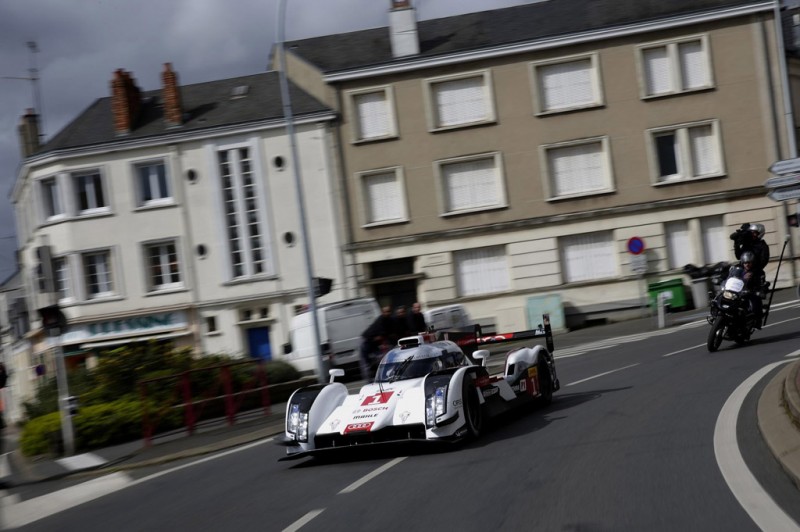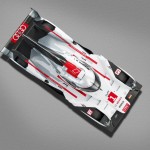Audi began the 2014 WEC season with a spectacular appearance. The new Audi R18 e-tron quattro did not do its initial kilometres at Le Mans on the legendary race track in Western France but in public traffic. Audi factory driver Tom Kristensen, with nine victories under his belt the record holder of the Le Mans 24 Hours, drove the diesel hybrid sports car from the Saint-Julien du Mans cathedral in the city centre to the famous race track.
Accompanied by TV cameras and photographers, and featured in a live worldwide broadcast on the internet, Audi’s new LMP1 race car completed the near-ten-kilometre distance through the city in a motorcade, did a lap on the Circuit Bugatti and arrived in front of the race track’s modern Welcome Centre amid the applause of the invited international journalists and guests.
“I’ve been competing at Le Mans since 1997 but this was absolutely new for me, too, and very exciting.”
Said Tom Kristensen, who in 2006 had driven the revolutionary Audi R10 TDI on its world premiere – in Paris – in public traffic as well.
Aside from the unusual drive which brought back memories of a Le Mans era from the distant past when the drivers would arrive in their own race cars, Audi surprised the public with a new livery of the Le Mans car. While the body of the new R18 e-tron quattro was still black with red details when the car made its world debut in December, a striking colour scheme now catches the eye. The new colour scheme of white, silver, red and black stands for fresh, expressive graphics. Dirk van Braeckel, Design Manager Motorsport and Special Projects at Audi, explains:
“Silver emphasises the past success in racing. As a very quiet colour it provides the base for our livery. White, as the second colour harmonises well with silver and appears very light. It stands for the hybrid drive. White is used asymmetrically in order to symbolise the complexity of this powertrain technology.”
The contours are modelled after the conductive tracks on PCBs, but clearly featured as an abstraction. The next colour is black. It is used for the front and rear wings, as well as on sections of the fenders and sides with highly defined geometric contours.
“We opted for matt black, as it nicely contrasts with the gloss white. Black stands for light-weight design. The black look of the large fin on the engine cover is intended to represent something like a backbone.”
Said van Braeckel. A unique red – Audi’s performance colour – completes the graphics. Special characteristics include the reflecting surfaces of the elements, Audi’s logos and inscriptions that are exclusively applied to these areas, as well as the pronounced longitudinal orientation of the colour in the overall concept. Van Braeckel explained:
“The reflective livery is particularly impressive at night and provides the spectators with an enhanced experience. Due to its longitudinal orientation the graphics express the speed that is so typical for Le Mans. Even the rims include a red segment. Due to the wheel rotation, it achieves a very dynamic effect.”
Source; Audi



